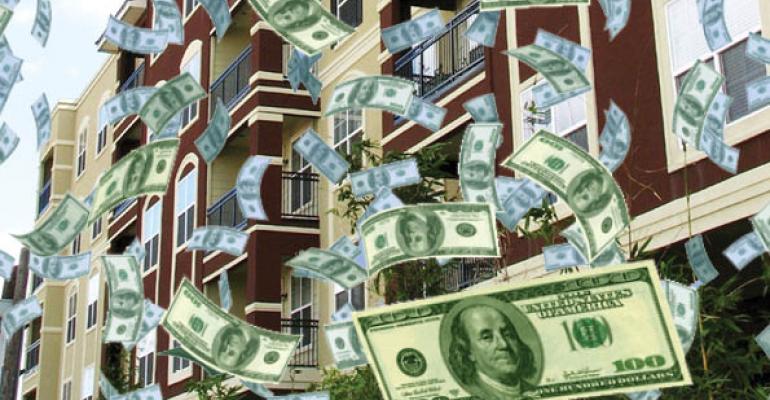The good news keeps coming for apartments. New resident rents rose 5.2 percent over the 12 months that ended in the second quarter. That’s the biggest rent hike since 1999-2000, according to the latest data from MPF Research, based in Carrollton, Texas.
Economic recovery is driving most of the surprising numbers. “By far the biggest factor driving up the overall rent growth number is simply significantly more momentum in metros that previously had been performance laggards,” says Greg Willet, vice president of research and analytics for MPF.
Lower turnover and construction delays also helped grow rents and fill vacant apartments. That a big turnaround from the beginning of the year. Experts had expected 2015 to be the year when developers finally opened more new apartments than the apartment markets could absorb all at once, and the number of vacant apartments would begin to rise as rent growth tapered off.
“We’re still really waiting for the coming slug of supply to hit the market, and we haven’t seen it yet,” says Ryan Severino, senior economist for Reis Inc. The percentage of vacant apartments stayed at a rock-bottom low 4.2 percent in the second quarter, the same as the first quarter, according to Reis. MPF put the vacancy rate at 4.1 percent in the first quarter, down from 4.4 percent in the second quarter.
Healing markets
Rents grew the fastest in apartment markets in the West, topped by Oakland, Calif.; Portland, Ore.; and Denver-Boulder, Colo. But rents are also growing quickly in Western markets that have taken years to heal from the housing crash.
“Price increases, well above the national norm, have spread to the region’s other large markets, including all of Southern California, Phoenix, Las Vegas, and Sacramento,” says Willet. “These areas were slow to achieve economic recovery coming out of the recession, but now are adding jobs and households at levels that stimulate considerable apartment demand.”
Construction delays spare markets
The apartment markets were also stronger than expected this spring because developers took more time than expected to finish new apartments they planned to open. For several quarters, the number of new apartments opening their doors has been between 10 percent and 20 percent less than the scheduled delivery numbers, according to MPF. In theory, the delayed apartment projects could all open in second half of this year, dragging down the market. In realty, the delays are likely to continue to slow down new construction, as developers struggle to get framing and dry wall laborers to construction sites.
“Some of the projects targeted to finish late this year won’t make it to delivery until early next year, so we really don’t think new supply is about to be much of a drag on performance results just ahead,” says Willet.
Delays can damage the construction budgets for these projects, but they also cushion the impact of new apartment construction on the apartment markets. Delayed properties have a few extra months to prelease, and are opening with fewer vacant apartments than normal. “These new projects just finishing aren’t dragging down overall occupancy to the degree that is typical,” says Willet. “That is allowing rent growth at the top end of the product spectrum to remain healthy.”
Extra demand
Demand for apartments is even stronger than experts anticipated. Younger Millennials in their early-to-mid-20s still make up the biggest block of new renters. But older Millennial renters in their early-to-mid-30s are staying in their rental apartments longer—even after they have coupled up and had children.
“There are a lot more toddlers in apartments today than was the case a few years ago … traditionally, those in that age segment have tended to leave the apartment market for single-family housing,” says Willet. “That young urban family segment is becoming more and more important to the apartment industry’s health.”

